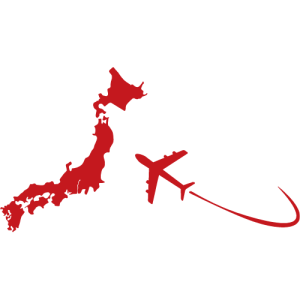JIN's
Mt. Fuji
Climbing Tour 2024
Departure dates
Jul 1-Sep 10, 2024
JIN's
Mt. Fuji
Climbing Tour 2024
Booking starts from
January 15
Experience the Transformative Moments
Experience the Transformative Moments

Mt. Fuji changes people.
Mt. Fuji is a mixture of sacred and profane, with both religious mountaineering and mass sightseeing.
Mt. Fuji has transformed us as we have climbed the mountain many times as guides with our clients, and have been strongly attracted to the sacred mountain.
We honor Mt. Fuji, people related to the mountain, and visitors. Together, we take on challenges with our clients.
Our mission is to convey the authentic allure of the mountain and serve as bearers of its historical legacy for generations to come. We believe in the transformative power of Mt. Fuji to change people’s hearts. We promise to offer our guests an experience that enriches their lives.

Mt. Fuji changes people.
Mt. Fuji is a mixture of sacred and profane, with both religious mountaineering and mass sightseeing.
Mt. Fuji has transformed us as we have climbed the mountain many times as guides with our clients, and have been strongly attracted to the sacred mountain.
We honor Mt. Fuji, people related to the mountain, and visitors. Together, we take on challenges with our clients.
Our mission is to convey the authentic allure of the mountain and serve as bearers of its historical legacy for generations to come. We believe in the transformative power of Mt. Fuji to change people’s hearts. We promise to offer our guests an experience that enriches their lives.
What's NEW
What's NEW
・Early Bird Discount is available until April 15. Book your tour and enjoy up to 18% savings.
・Five slots are available for the 2-Day climbing shared (group) tour on July 16 and 23 and August 8, 13, and 29.
・New restriction on the number of climbers on Mt.Fuji( Official information and News )
*JIN tours are by reservation only, so not subject to this regulation.
・The 2024 season(from July 1 to September 10) of Mt. Fuji climbing tour booking has started from January 15.
・Early Bird Discount is available until April 15. Book your tour and enjoy up to 18% savings.
・Five slots are available for the 2-Day climbing shared (group) tour on July 16 and 23 and August 8, 13, and 29.
・New restriction on the number of climbers on Mt.Fuji( Official information and News )
*JIN tours are by reservation only, so not subject to this regulation.
・The 2024 season(from July 1 to September 10) of Mt. Fuji climbing tour booking has started from January 15.
Tour Calender
*Seats are limited on our popular tours, and we operate on a first-come, first-served basis. To secure your spot on the adventure, we highly recommend booking as soon as possible.

As of 19th April
◯
We still have availability.
△
Availability is low.
X
Only waitlist reservation available.
Shared Tour
2-Day Shared (group) Tour is available.
Tour Calender
Available
Availability is low
Only waitlist is available
2-day Shared Tour is available

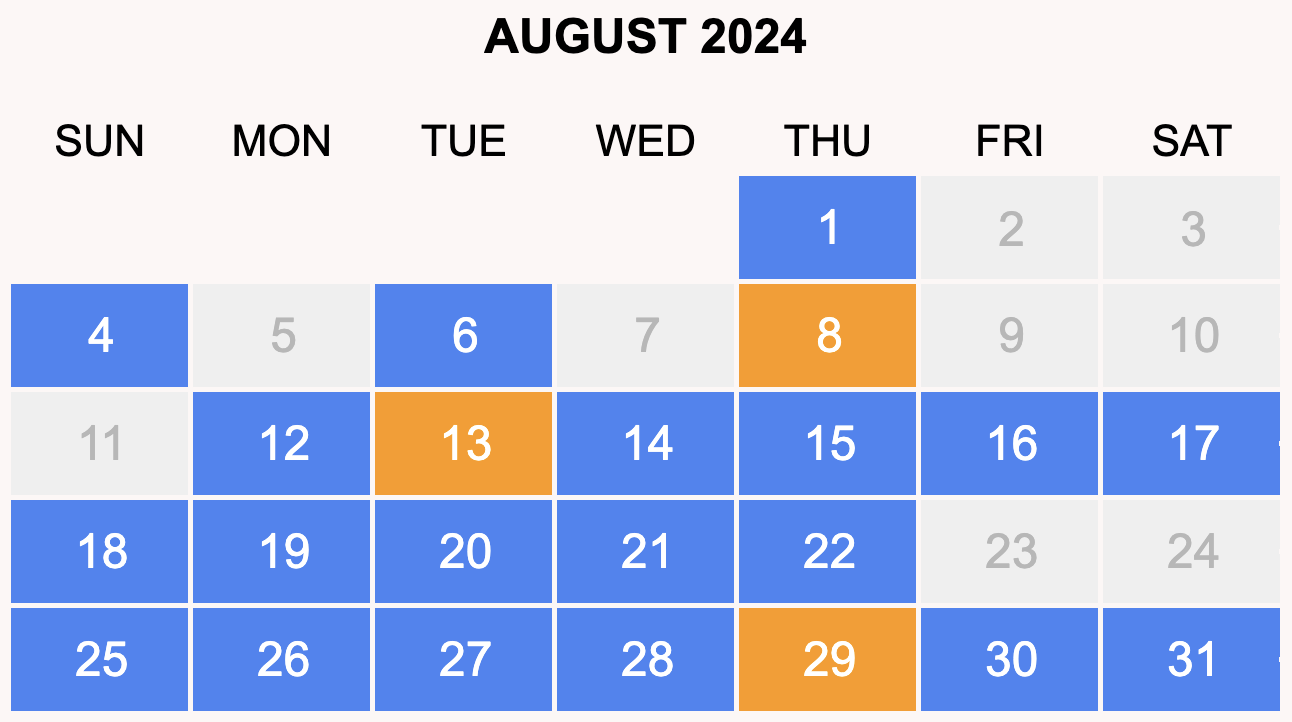
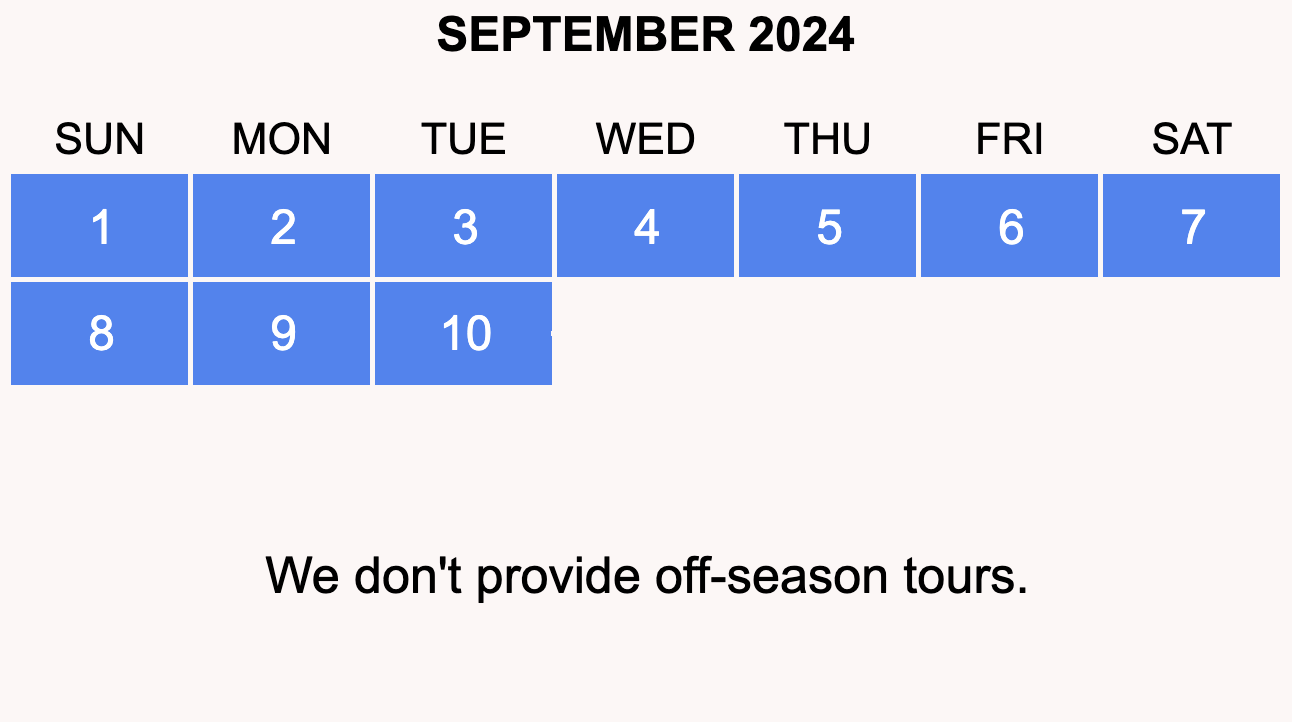
As of 19th April
*Seats are limited on our popular tours, and we operate on a first-come, first-served basis. To secure your spot on the adventure, we highly recommend booking as soon as possible.
Tour Features
Tour Features
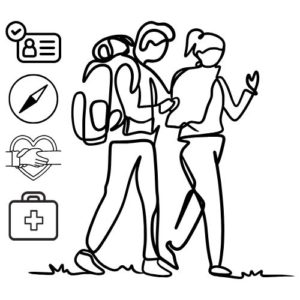
Flexible Private Tour with Skilled Guides
Officially certified guides with an experience over 10 years / 100+ climbs of Mount Fuji exclusively guide you with safety as the priority.

Full Support & Hospitality
We provide a comprehensive multilingual support (Japanese, English, and Spanish) tour experience tailored to your needs, including a pre-climb online session for preparation, transportation, lodging, meals, rental gear, and more.
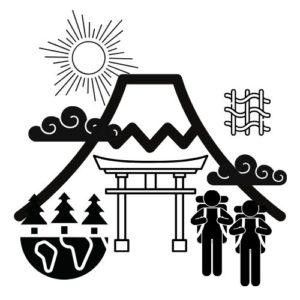
More Than Mountain Climbing
Since ancient times, Mount Fuji has been a place of worship. We offer the opportunity to experience such as visiting Sengen Shrine and praying, the rich textile industry and “Oshimachi” culture born from the ecosystem and religious mountaineering in Fujiyoshida City at the foot of the mountain.
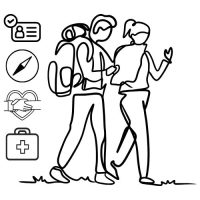
Flexible Private Tour
with Skilled Guides
Officially certified guides with an experience over 10 years / 100+ climbs of Mount Fuji exclusively guide you with safety as the priority.

Full Support & Hospitality
We provide a comprehensive multilingual support (Japanese, English, and Spanish) tour experience tailored to your needs, including a pre-climb online session for preparation, transportation, lodging, meals, rental gear, and more.
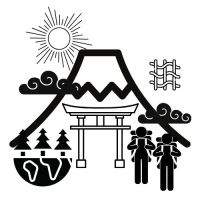
More Than Mountain Climbing
Since ancient times, Mount Fuji has been a place of worship. We offer the opportunity to experience such as visiting Sengen Shrine and praying, the rich textile industry and “Oshimachi” culture born from the ecosystem and religious mountaineering in Fujiyoshida City at the foot of the mountain.
Tour Types
Tour Types
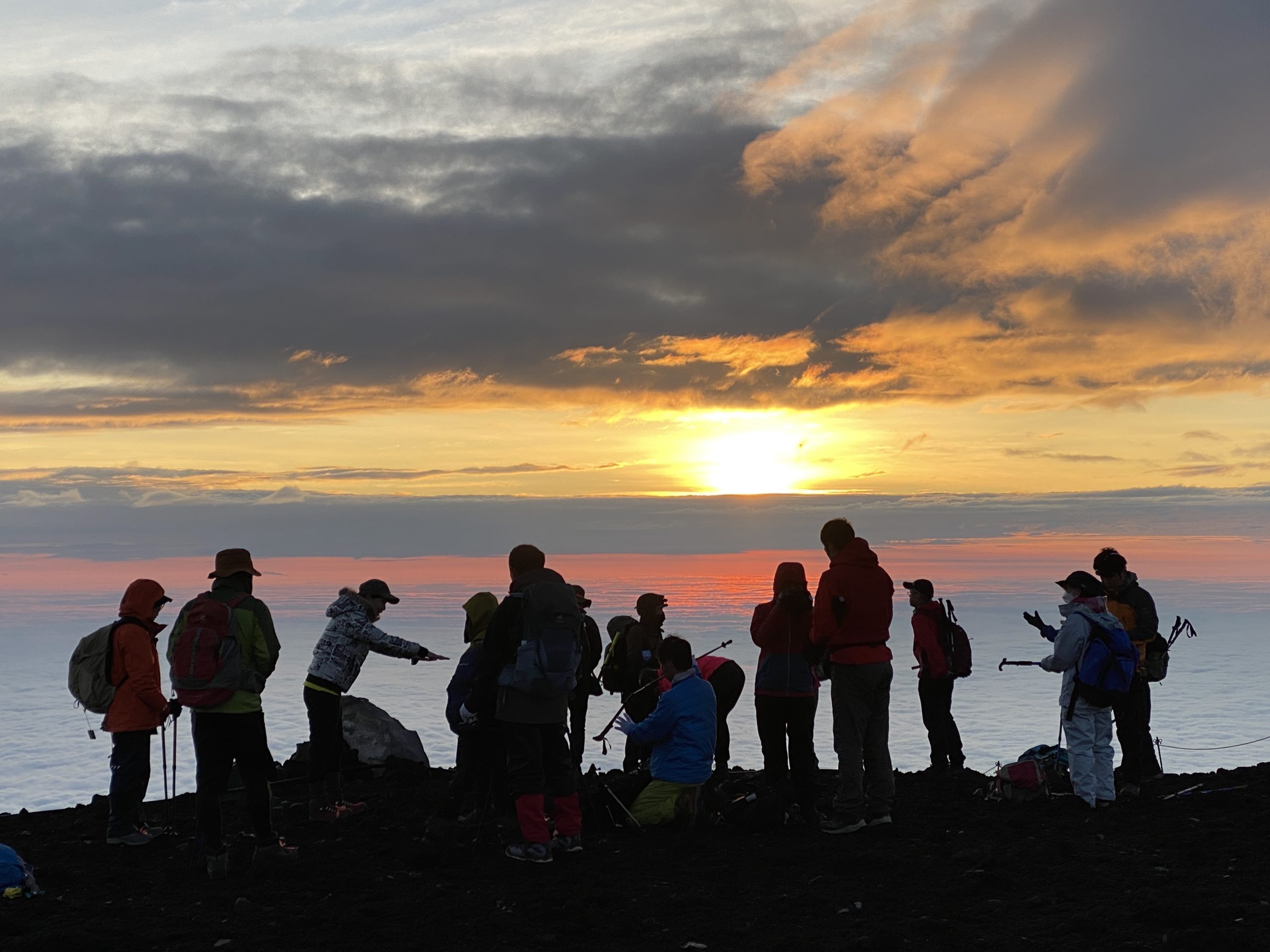
2-Day Mt. Fuji Tour
Discover the allure of traditional Mt. Fuji hiking with an exclusive, crowd-free experience. We will support you in your challenge with safety, adventure and the services that only a tour can offer.
- Day 1: Meet your guide at Kawaguchiko Station and travel to Yoshida route 5th station after visiting a sacred Fuji Sengen shrine. Then trek 5 hours to the 8th station lodge. Spend the night.
- Day 2: Witness sunrise at the 8th station or the summit after night trekking. Descend to the 5th station from the summit and return to Kawaguchiko station.
Transportation, lodging, and meals are included. Your choice, your Fuji adventure!
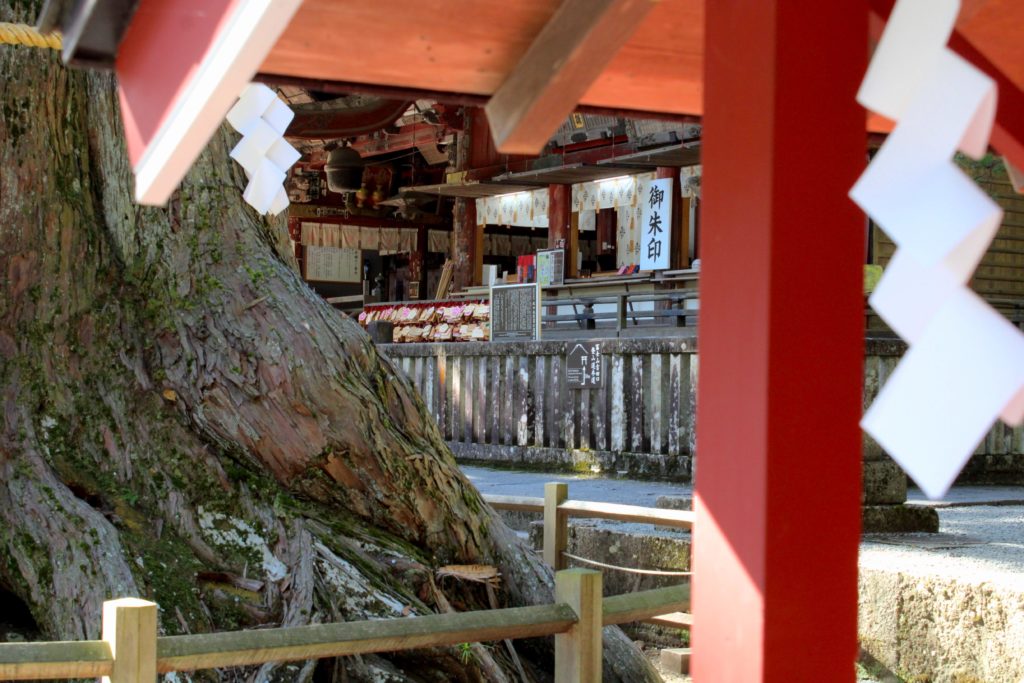
3-Day Mt. Fuji Pilgrimage Tour
This is a popular itinerary in recent years, with a relaxed schedule without a night hike. Recommended for beginners and families with children as well.
- Day 1: Meet at Kawaguchiko station and travel to Yoshida Route 5th station after visiting two sightseeing spots. Trek 3 hours to the 7th station lodge (2,800 m).
- Day 2: After staying at the lodge till sunrise, head to the summit. Reaching Japan’s highest point with a crater trek and then returning to the 8th Station lodge before evening.
- Day 3: Watch the sunrise again and descend to the 5th station. Finish at Kawaguchiko station at 9 am.
Transportation, lodging, and meals are included. Fantastic opportunity with authentic experience, cultural immersion, and personal challenge!
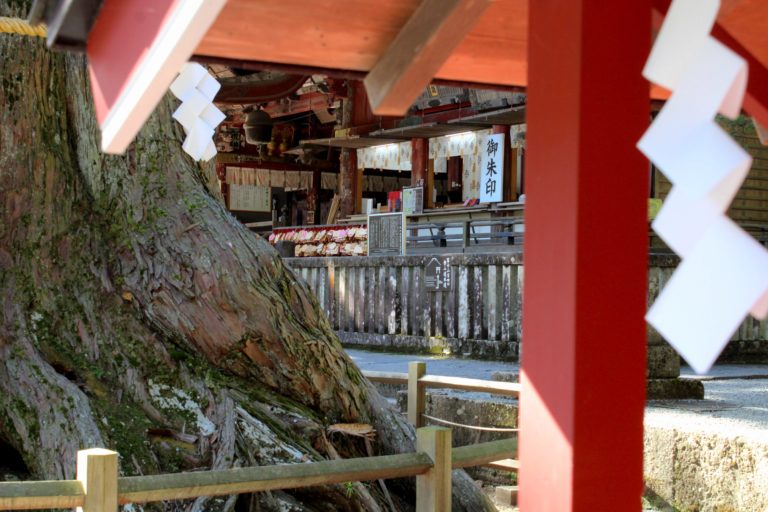
Guide Profiles
Guide Profiles
The heart of JIN lies in the “people” who create the value of the experience. Our guides have weaved one-of-a-kind stories as we face Mt. Fuji and our guests. We look forward to weaving new stories with our guests.
The heart of JIN lies in the “people” who create the value of the experience. Our guides have weaved one-of-a-kind stories as we face Mt. Fuji and our guests. We look forward to weaving new stories with our guests.

Kenji Fujimoto
Representative of Japan Exploration Tours JIN. 48 countries visited including independent round-the-world tours, visiting unexplored regions and mountains. After 8 years of working for travel agencies, he started his own company in 2018 to explore Japan. Since 2004, official Mt. Fuji guide.

Ko Yamashita
He has been a member of the exploration club since his student days, delving deep into travel and local culture. After flying as a pilot, he became an English guide. Since 2014, official Mt. Fuji guide.

Daiki Nishikawa
He loves Sagrada Familia in Spain and leads a dual life between Barcelona and Japan. He has published an Mt. Fuji climbing photobook titled “FUGAKUZEROKEI”. Since 2013, official Mt. Fuji guide.

・・・・・・

JIN's Tour is Chosen
・・・・・・

1. Safety First
1. Safety First
Your well-being is our top priority. We cherish the client’s first culture. We strive to support and inspire our guests through the experience of safety and adventure.
Your well-being is our top priority. We cherish the client’s first culture. We strive to support and inspire our guests through the experience of safety and adventure.

2. Perfect logistics support
2. Perfect logistics support
JIN’s Tours include transportation, accommodation, food, and optional rental gear service all you need for Mt. Fuji Adventure as total packages.
JIN’s Tours include transportation, accommodation, food, and optional rental gear service all you need for Mt. Fuji Adventure as total packages.

3. Experienced Guides
3. Experienced Guides
Benefit from our knowledgeable and experienced guides who have climbed for more than 10 years and 100 times, aim for a high success rate with accurate advice.
Benefit from our knowledgeable and experienced guides who have climbed for more than 10 years and 100 times, aim for a high success rate with accurate advice.

4. Personalized Adventures
4. Personalized Adventures
We cater to your specific needs and interests and offer an experience that only private tours can make a crowd-free climb.
We cater to your specific needs and interests and offer an experience that only private tours can make a crowd-free climb.

5. Commitment to Sustainability
5. Commitment to Sustainability
We prioritize responsible tourism to protect Mt. Fuji’s environment by collaborating with local organizations.
We prioritize responsible tourism to protect Mt. Fuji’s environment by collaborating with local organizations.

6. Special Gifts
6. Special Gifts
We offer an original Mt. Fuji summit certificate, the premium Mt. Fuji photo book “FUGAKUZEROKEI“, and Japanese high-quality amenities.
We offer an original Mt. Fuji summit certificate, the premium Mt. Fuji photo book “FUGAKUZEROKEI“, and Japanese high-quality amenities.
Client reviews & testimonials

V.L from the UK

Couldn’t recommend this tour enough, especially for beginner climbers – this was a very challenging climb and online sites do not make that clear enough. From the moment we booked, it was clear that the team are experts, they were prompt in responding and were able to answer any questions we had and also preempted questions that we would have. The team is very organised and will guide you from the very beginning including getting to the 5th station and back. We were very fortunate to have Ko whose guidance was second to none, without him we would not have made it to the top. The elevation is intense and altitude sickness is very real. Ko also prepared us with the correct gear and took care of our lodging arrangements. We were lucky enough to make it to the 10th station on the first day before a typhoon hit overnight and it was closed in the morning, without his guidance we would not have had this great once in a lifetime experience!

M.W from Singapore

Climbing to the summit of Mt. Fuji is very tough. Especially when there’s a typhoon approaching. On the way to reach the summit, we found many groups started to retreat due to the strong wind. But Ko helped my family to complete the trip safely and reach the summit to see the magnificent scenery with sunshine. We had an unforgettable trekking trip with Ko. We definitely recommend this tour!
Our guide Ko has professional experience in mountain climbing. Not only he helped us to pack and choose the right clothes to keep warm, but also was thoughtful to guide us take a slow pace to adjust to the altitude change. Although the weather was not so good, but we had a wonderful trekking trip. The team’s climbing tour is definitely recommended, especially for a rookie like me, haha:).

A.A from the US

Kenji and Ko were spectacular hosts and guides on the Mt. Fuji climb. Not only did they have extensive experience climbing the mountain (Kenji has climbed Mt. Fuji over 100 times), they also went the extra mile to help us with hard to get mountain hut reservations and shared cab rides that made transfers very easy. They even help us with transportation arrangements the day after the climb.
Climbing Mt. Fuji is very popular with visitors and natives alike, but it is not easy. Altitude sickness is a real challenge for many and Kenji knew excellent strategies to help with the elevation. We saw others trying to wing it with disastrous results. I would advise any first time Mt. Fuji climber to book this tours. It really helped me and my family to get the most from this experience!
FAQ: Your Mt. Fuji Adventure
Note: This FAQ is intended as a general guide and does not replace the need for thorough research and preparation before climbing Mt. Fuji.
Q: How difficult is climbing Mt. Fuji?
A: Mt. Fuji(3,776 meters) is considered a moderately challenging climb, especially due to the altitude and potential for rapidly changing weather conditions. While technical climbing skills aren’t necessary, a good level of fitness and preparation will significantly improve your experience.
Q: How many percentage of climbers reach the summit?
A: The summit success rate for Mt. Fuji is estimated to suggest around 70〜80% of climbers reach the summit during the official climbing season.
Q: How long does it take?
A: Most climbers complete the ascent in 5-7 hours and the descent in 3-4 hours from the 5th station to the summit. Many people choose to stay overnight at a mountain hut and summit for sunrise, spreading the climb over two days.
At JIN’s Tour, it takes around 8-10 hours to ascend and 4-5 hours to descend as we walk slowly to avoid altitude sickness and save stamina. Over 95% of participants have successfully summited Mt. Fuji with our tour, which prioritizes safety and provides a valuable and enriching experience.
Q: When is the best time of year to climb Mt. Fuji?
A: The official climbing season is from July 1 to September 10 on the Yoshida trail, and from July 10 to September 10 on the Subashiri, Gotemba, and Fujinomiya trails. This provides the safest weather conditions and the most open facilities.
Q: Where is Mt. Fuji in Japan?
A: Mt. Fuji lies between Yamanashi and Shizuoka prefectures on Honshu Island, Japan’s main island. It is 1 and a half hours from Tokyo by highway bus.
Q: How many routes are there? Which is the best?
A: There are four main routes:
- Yoshida: Most popular, well-developed facilities. Number of Climbers 2023 Summer 137,236.
- Fujinomiya: The shortest route and the trail is the same as the descending trail. Number of Climbers 2023 Summer 49,545.
- Subashiri: A good mix of crowds and scenery. Number of Climbers 2023 Summer 19,062.
- Gotemba: Longest and most challenging, less crowded. Number of Climbers 2023 Summer 15,479.
There’s no single ‘best’ route. It depends on your preference, experience, and timing.
Q: How much does it cost?
A: Costs can vary, but here’s a general idea:
- Entrance Fee: Climbers who pass through the gate at the fifth station will pay a fee of 2,000 yen per person. (Previously, a voluntary donation of 1,000 yen was implemented for the conservation of Mount Fuji. The maximum fee charged per person will now be 3,000 yen.)
- Accommodation: Mountain huts range from 9,000-15,000 yen per person per night.
- Food/Water: Prices are higher on the mountain. Plan an additional 5,000 – 10,000 yen.
- Transportation: Varies with your starting point. There are train and highway bus to the foot of Mt. Fuji or direct highway bus from Tokyo to the 5th station of Yoshida trail.
- Guided Tours: Prices vary depending on the company and the itinerary.
Q: What equipment do I need?
A: Here’s the essential gear: See how to prepare.
- Hiking boots: Sturdy, waterproof, and with good ankle support
- Layered clothing: Prepare for warm weather at the base and cold, windy conditions near the top. A waterproof jacket and pants are crucial.
- Backpack: Around 25 liters to carry water, snacks, warm layers, etc.
- Headlamp/flashlight: For night hiking
- Sunscreen & Hat: Sun protection is vital
- First-aid Kit: Basic supplies for cuts, blisters, etc.
- Cash: Some facilities on the mountain do not accept credit cards or electronic payments.
Q: How much physical strength is required?
A: Climbing Mt Fuji demands a good level of cardio fitness and leg strength. You should be comfortable with sustained hiking for several hours and able to handle steep, uneven terrain. Regular training in the months leading up to the climb is highly recommended. See how to prepare.
Q: Can I make reservations at mountain lodges?
A: Yes, and it’s highly advisable to make a reservation for lodges in advance. You can often book directly on the mountain hut’s website. Some lodges may be closed when you arrive at night, so be sure to check the opening hours in advance.
Mountain Hut Reservations
Each mountain hut usually has its booking system. Refer to the official Mt. Fuji website for links to individual hut reservation sites.
Q: What is the weather like on Mt. Fuji?
A: Mt. Fuji is a high mountain, so there is a significant temperature difference between the base and the summit. Especially, it could be a tough situation and less than minus zero degree before sunrise near the summit when it’s windy and rainy. The weather can also change rapidly. Check the weather forecast thoroughly before setting off and prepare clothing and equipment for a variety of temperatures and precipitation.
Q: Are there days when you can’t climb?
A: The climbing trails may be closed due to severe weather such as typhoons. Even during the official climbing season (July to mid-September), always check the latest information. Even if the trails are open, it is important to avoid climbing if the weather conditions are unsafe.
Q: What is altitude sickness? How many people get it? What should I do if I get it?
A: Altitude sickness is a condition that can occur when you ascend to a high altitude too quickly. Symptoms include headache, dizziness, and nausea. It is thought that a certain percentage of people climbing Mt. Fuji will experience altitude sickness. For mild symptoms, it may help to ascend slowly, rest, and drink plenty of fluids. If symptoms are severe, it is important to descend (return to a lower altitude) immediately.
Q: Is there a risk of falling rocks?
A: Yes, there is a risk of falling rocks on Mt. Fuji’s trails as they are made of volcanic gravel. Be aware of your surroundings. Avoid walking directly below other climbers and keep a safe distance from them. You can consider about Helmet free lending service (Yoshida Trail and Fujinomiya Trail).
*[Yoshida Trail] Helmet free lending service at Mt. Fuji 6th station Mt. Fuji Safety Guidance Center. Quantities are limited. Pay a deposit of 2,000 yen/per Helmet. Deposit will be returned only when borrowed helmets are not damaged and lost.
*[Fujinomiya Trail] Mt. Fuji General Information Center at 5th station provides Helmet free lending. No deposit but need to fill out a form.
Q: Is it safe to bring children? Is there an age limit?
A: Climbing Mt. Fuji with young children is not recommended due to the high physical demands and risks involved. Children over elementary school age may be able to climb with a guardian, but it is important to carefully consider the weather and the child’s physical condition. There is no official age limit for climbing Mt. Fuji.
Q: Can beginner climbers climb Mt. Fuji?
A: Mt. Fuji does not require special mountaineering skills, but it is a moderately challenging climb. It is recommended that you have a basic level of fitness and some hiking experience. Beginners may want to consider using a guided tour.
Q: What precautions should I take when climbing Mt. Fuji?
A: To ensure a safe and enjoyable climb, take the following precautions:
- Check the weather forecast thoroughly.
- Avoid setting unrealistic schedules.
- Prepare appropriate clothing and equipment.
- Understand altitude sickness and be aware of its symptoms.
- Consider purchasing travel insurance.
- Please do not litter, take your trash with you.
Q: What is prohibited while climbing Mt. Fuji?
- Leaving the trails
- Collecting plants, stones, or animals
- Camping on the trails
- Lighting open fires
- Flying drones
Please cooperate with the rules to protect the environment of Mt. Fuji.
Q: Can I climb alone?
A: Yes, you can climb alone, while it’s technically possible to climb Mt. Fuji alone, it’s generally not recommended, especially for those without significant hiking experience. Climbing with a partner or group is safer as you’ll have assistance in case of emergencies or unexpected weather changes.
Q: Should I have a guide?
A: A guide is not mandatory for climbing Mt. Fuji. However, there are several benefits to consider:
- Safety: Guides are knowledgeable about weather patterns, and trail conditions, and can assist you in managing altitude sickness and any unforeseen incidents.
- Navigation: Following a guide eliminates the stress of navigating, especially at night or in poor visibility.
- Pacing: Guides help you maintain a suitable pace, key to a successful climb and avoiding exhaustion.
- Cultural Insights: Learning about Mt. Fuji’s history and significance enhances your experience.
Q: Is it worth it to join a guided tour among the attractive Japan tours available in various locations?
A: Absolutely! Guided Mt. Fuji tours offer several advantages over visiting other spots in Japan:
- Logistics: Tours handle transportation, accommodation, and often meals, streamlining your adventure.
- Efficiency: You maximize your time by focusing on the climb itself.
- Camaraderie: Tours create a social atmosphere where you can share the experience with like-minded people.
- Ease for Foreign Travelers: Guided tours often overcome language barriers and provide support for navigating Japanese customs and transportation.
Ultimately, the decision to climb solo, hire a guide, or join a guided tour depends on your experience level, comfort with independent travel, and what type of experience you want to have on Mt. Fuji.
Q: What are the features of each travel agency?
A: Travel agencies specializing in Mt. Fuji tours offer a range of features. Here’s what to consider:
- Group Size: Do they offer large, medium, or small group climbs?
- Itinerary: Is it purely focused on the climb, or does it incorporate other Japanese cultural experiences?
- Accommodation: Type of mountain huts used (more basic or slightly more comfortable).
- Guide Experience: What qualifications and experience do their guides possess?
- Price: Look for value, not just the cheapest option. What’s included and excluded in the cost?
Q: What are the key points to look for?
A: Prioritize safety and enjoyment when selecting a tour operator. Research these factors:
- Reputation: Read online reviews, check testimonials, and see if they’re affiliated with any tourism organizations.
- Safety focus: Inquire about their emergency procedures, guide-to-climber ratios, and altitude sickness protocols.
- Itinerary Clarity: A well-defined itinerary helps you understand exactly what’s included.
- Customer service: Responsive and helpful communication is a good sign.
Q: Can you offer private tours that include local, on-the-ground expertise and flexibility?
A: Yes! At JIN’s Tours, we specialize in private Mt. Fuji tours tailored to your interests and fitness levels. Our guides provide insider knowledge and we can customize your itinerary for a unique and unforgettable experience.
Let us know if you’d like to discuss creating a unique Mt. Fuji tour crafted just for you!
Q: What are some useful websites related to Mt. Fuji climbing?
A: Here’s a breakdown of some useful websites for Mt. Fuji climbing info, separated into categories
Official Websites:
- Mt. Fuji Official Website: Offers information on trails, regulations, mountain hut reservations, and safety guidelines.
- Fujiyoshida City Site: The official tourism website offers information on attractions, events, accommodation, access, and more.
Recommended Accommodations at the foot of the Mt. Fuji Yoshida trail:
- Fujilake Hotel: A well-established, mid-size hotel directly on Lake Kawaguchiko offering amazing Mount Fuji views.
- Fuji Marriott Hotel Lake Yamanaka: Located near Lake Yamanaka with Mount Fuji views, restaurants, and a bathhouse with indoor and outdoor onsen areas.
- Kaneyamaen: Traditional Ryokan. Located directly on Lake Kawaguchiko. Offers tatami-mat rooms, kaiseki dining, onsen baths, and beautiful Fuji views.
- Saruya Hostel: Blending tradition and modern comfort in a restored Japanese house. Great base for Mt. Fuji climbers, with bike rentals and a welcoming, social vibe.
- Oshi House Hitsuki: Minshuku/Pension. A historical house called ‘Oshi no ie’ is related to the tradition of the Mt.Fuji Pilgrimage in the Edo era. Family-run style accommodation, offering a more intimate and homey Japanese experience.
Application Process
STEP 1

Send us an inquiry through our website or email to check the availability of the tour.
STEP 3

Receive the main invoice and complete payment of the balance. (*We will issue the invoice after booking the lodge, arranging transportation, and scheduling the guides)
Mt. Fuji Photo Gallery
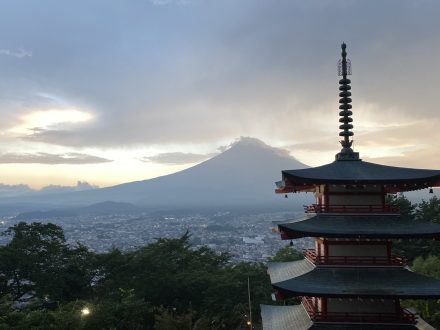
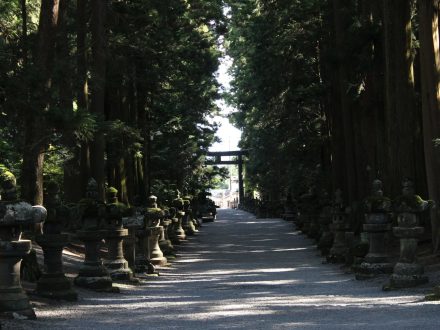

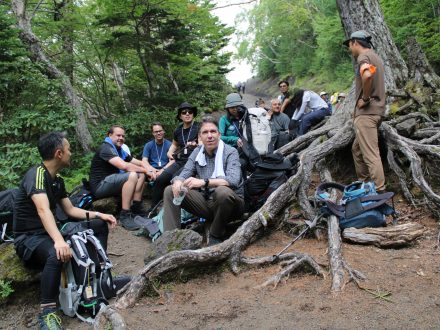
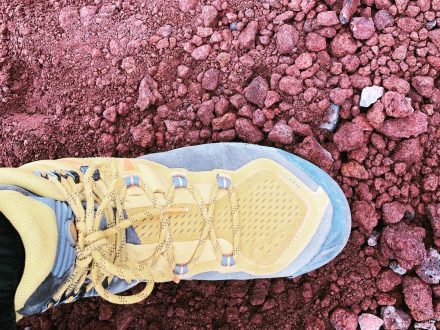
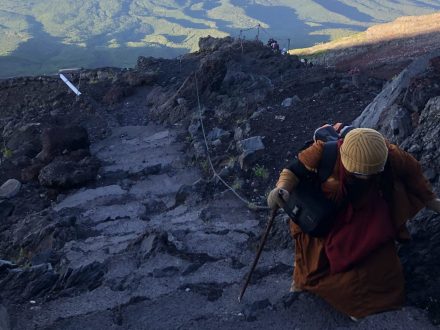
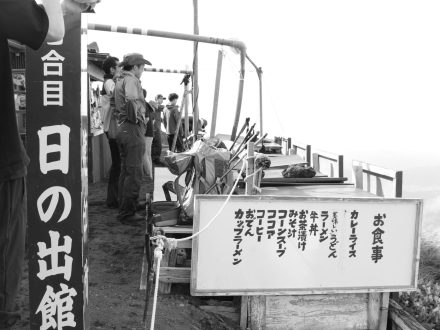
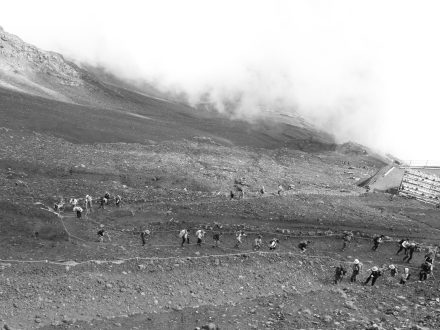
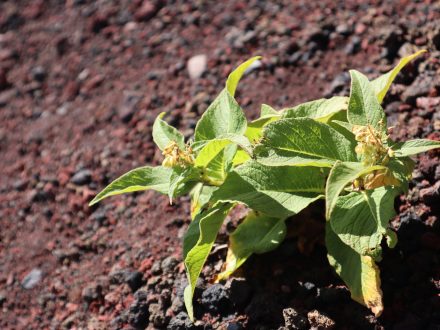
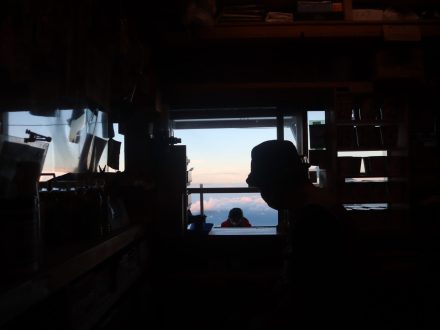
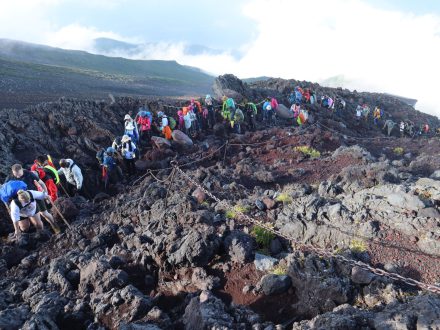

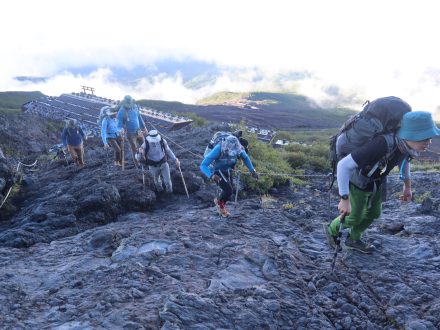
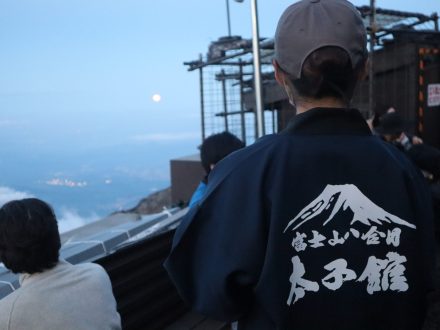
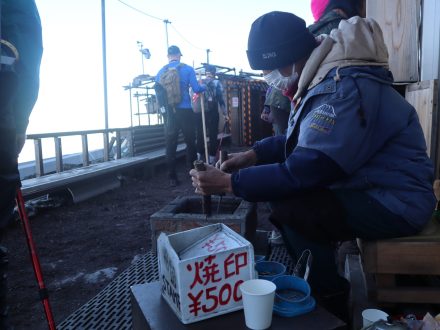

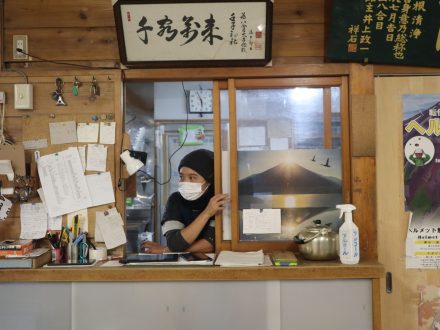
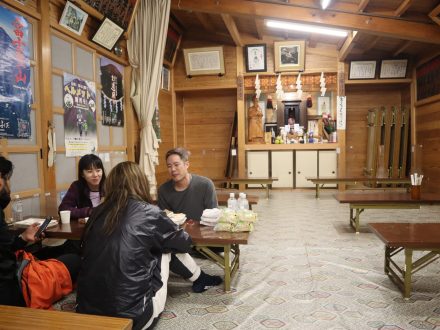
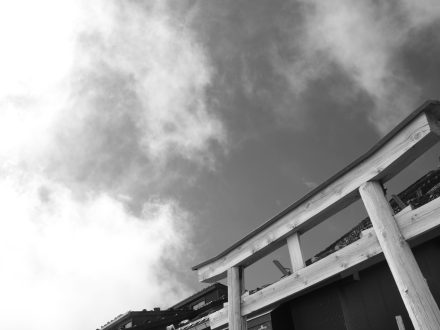
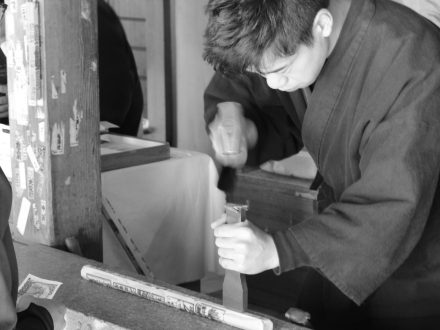

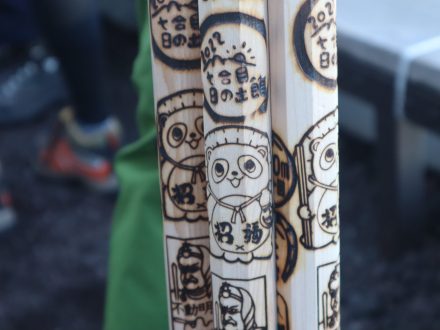

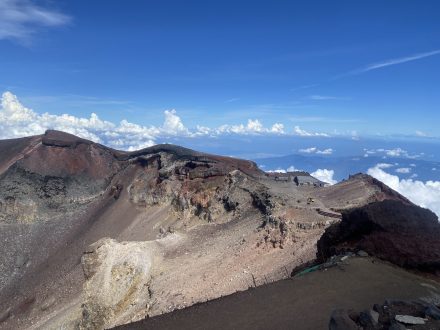
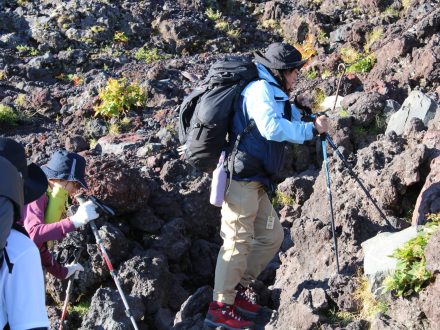
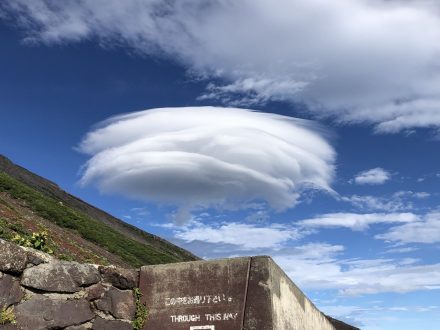
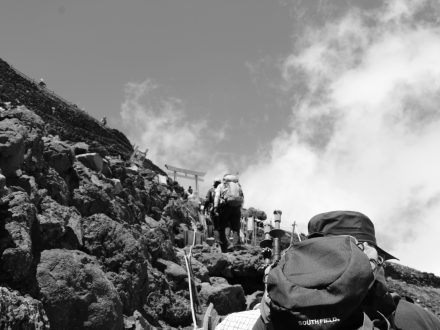
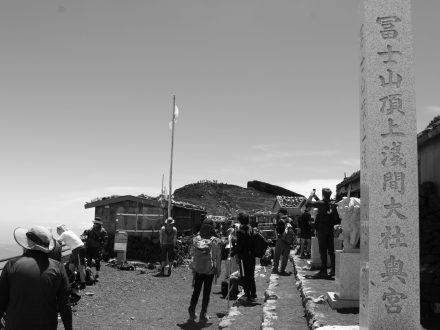
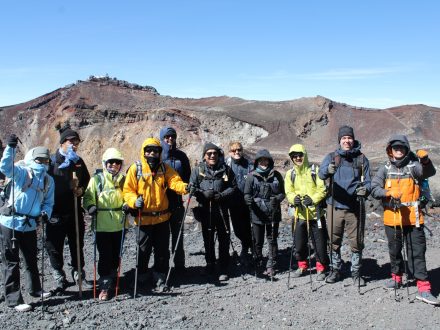
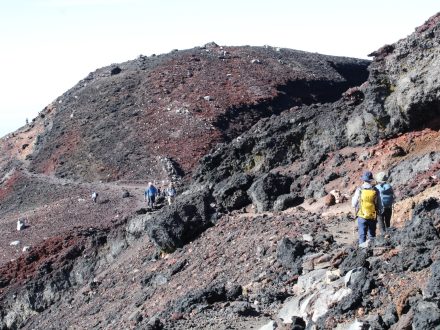
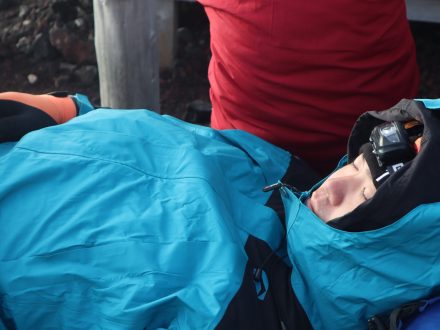
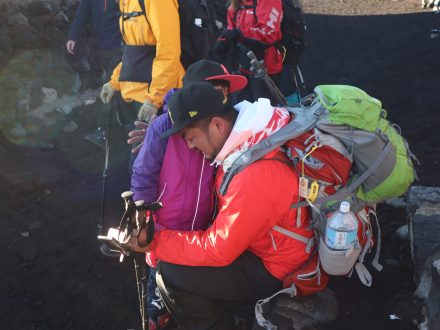
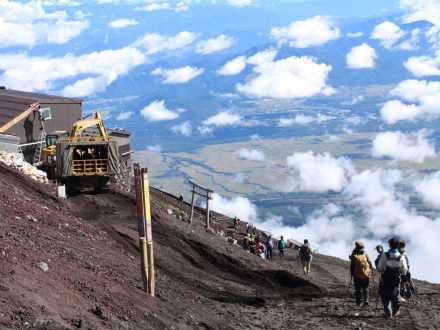

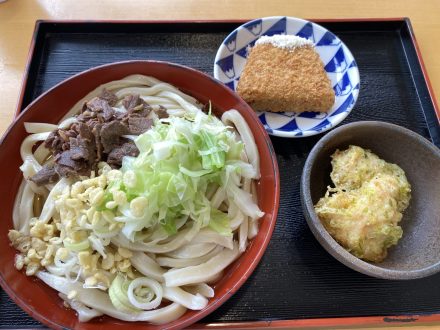

©️Japan Exploration Tours JIN-仁
Inquiry Form
Client reviews & testimonials


▼Read More! ▼
Kenji and Ko were spectacular hosts and guides on the Mt. Fuji climb. Not only did they have extensive experience climbing the mountain (Kenji has climbed Mt. Fuji over 100 times), they also went the extra mile to help us with hard to get mountain hut reservations and shared cab rides that made transfers very easy. They even help us with transportation arrangements the day after the climb.
Climbing Mt. Fuji is very popular with visitors and natives alike, but it is not easy. Altitude sickness is a real challenge for many and Kenji knew excellent strategies to help with the elevation. We saw others trying to wing it with disastrous results. I would advise any first time Mt. Fuji climber to book this tours. It really helped me and my family to get the most from this experience!
Climbing to the summit of Mt. Fuji is very tough. Especially when there’s a typhoon approaching. On the way to reach the summit, we found many groups started to retreat due to the strong wind. But Ko helped my family to complete the trip safely and reach the summit to see the magnificent scenery with sunshine. We had an unforgettable trekking trip with Ko. We definitely recommend this tour!
Our guide Ko has professional experience in mountain climbing. Not only he helped us to pack and choose the right clothes to keep warm, but also was thoughtful to guide us take a slow pace to adjust to the altitude change. Although the weather was not so good, but we had a wonderful trekking trip. The team’s climbing tour is definitely recommended, especially for a rookie like me, haha:).
Couldn’t recommend this tour enough, especially for beginner climbers – this was a very challenging climb and online sites do not make that clear enough. From the moment we booked, it was clear that the team are experts, they were prompt in responding and were able to answer any questions we had and also preempted questions that we would have. The team is very organised and will guide you from the very beginning including getting to the 5th station and back. We were very fortunate to have Ko whose guidance was second to none, without him we would not have made it to the top. The elevation is intense and altitude sickness is very real. Ko also prepared us with the correct gear and took care of our lodging arrangements. We were lucky enough to make it to the 10th station on the first day before a typhoon hit overnight and it was closed in the morning, without his guidance we would not have had this great once in a lifetime experience!
Absolutely extraordinary experience climbing Mt.Fuji and our guide, Dai, was amazing, making sure we paced ourselves and acclimated properly to the elevation. From the beginning told me how to walk to make it to the top and I made it without any breathing problems. He made sure we were well-equipped before departing so we didn’t have any issues. The highlight of our trip, could not recommend Kenji and his team enough, especially our guide Dai-he’s the man!!
FAQ: Your Mt. Fuji Adventure
Note: This FAQ is intended as a general guide and does not replace the need for thorough research and preparation before climbing Mt. Fuji.
Q: How difficult is climbing Mt. Fuji?
A: Mt. Fuji(3,776 meters) is considered a moderately challenging climb, especially due to the altitude and potential for rapidly changing weather conditions. While technical climbing skills aren’t necessary, a good level of fitness and preparation will significantly improve your experience.
Q: How many percentage of climbers reach the summit?
A: The summit success rate for Mt. Fuji is estimated to suggest around 70〜80% of climbers reach the summit during the official climbing season.
Q: How long does it take?
A: Most climbers complete the ascent in 5-7 hours and the descent in 3-4 hours from the 5th station to the summit. Many people choose to stay overnight at a mountain hut and summit for sunrise, spreading the climb over two days.
At JIN’s Tour, it takes around 8-10 hours to ascend and 4-5 hours to descend as we walk slowly to avoid altitude sickness and save stamina. Over 95% of participants have successfully summited Mt. Fuji with our tour, which prioritizes safety and provide a valuable and enriching experience.
Q: When is the best time of year to climb Mt. Fuji?
A: The official climbing season is from July 1 to September 10 on the Yoshida trail, and from July 10 to September 10 on the Subashiri, Gotemba, and Fujinomiya trails. This provides the safest weather conditions and the most open facilities.
Q: Where is Mt. Fuji in Japan?
A: Mt. Fuji lies between Yamanashi and Shizuoka prefectures on Honshu Island, Japan’s main island. It is 1 and a half hours from Tokyo by car or highway bus.
Q: How many routes are there? Which is the best?
A: There are four main routes:
- Yoshida: Most popular, well-developed facilities. Number of Climbers 2023 Summer 137,236.
- Fujinomiya: The shortest route and the trail is the same as the descending trail. Number of Climbers 2023 Summer 49,545.
- Subashiri: A good mix of crowds and scenery. Number of Climbers 2023 Summer 19,062.
- Gotemba: Longest and most challenging, less crowded. Number of Climbers 2023 Summer 15,479.
There’s no single ‘best’ route. It depends on your preference, experience, and timing.
Q: How much does it cost?
A: Costs can vary, but here’s a general idea:
- Entrance Fee: Climbers who pass through the gate at the fifth station will pay a fee of 2,000 yen per person. (Previously, a voluntary donation of 1,000 yen was implemented for the conservation of Mount Fuji. The maximum fee charged per person will now be 3,000 yen.)
- Accommodation: Mountain huts range from 9,000-15,000 yen per person per night.
- Food/Water: Prices are higher on the mountain. Plan an additional 5,000 – 10,000 yen.
- Transportation: Varies with your starting point. There are train and highway bus to the foot of Mt. Fuji or direct highway bus from Tokyo to the 5th station of Yoshida trail.
- Guided Tours: Prices vary depending on the company and the itinerary.
Q: What equipment do I need?
A: Here’s the essential gear: See how to prepare.
- Hiking boots: Sturdy, waterproof, and with good ankle support
- Layered clothing: Prepare for warm weather at the base and cold, windy conditions near the top. A waterproof jacket and pants are crucial.
- Backpack: Around 25 liters to carry water, snacks, warm layers, etc.
- Headlamp/flashlight: For night hiking
- Sunscreen & Hat: Sun protection is vital
- First-aid Kit: Basic supplies for cuts, blisters, etc.
- Cash: Some facilities on the mountain do not accept credit cards or electronic payments.
Q: How much physical strength is required?
A: Climbing Mt Fuji demands a good level of cardio fitness and leg strength. You should be comfortable with sustained hiking for several hours and able to handle steep, uneven terrain. Regular training in the months leading up to the climb is highly recommended. See how to prepare.
Q: Can I make reservations at mountain lodges?
A: Yes, and it’s highly advisable to make a reservation for lodges in advance. You can often book directly on the mountain hut’s website. Some lodges may be closed when you arrive at night, so be sure to check the opening hours in advance.
Mountain Hut Reservations
Each mountain hut usually has its booking system. Refer to the official Mt. Fuji website for links to individual hut reservation sites.
Q: What is the weather like on Mt. Fuji?
A: Mt. Fuji is a high mountain, so there is a significant temperature difference between the base and the summit. Especially, it could be a tough situation and less than minus zero degree before sunrise near the summit when it’s windy and rainy. The weather can also change rapidly. Check the weather forecast thoroughly before setting off and prepare clothing and equipment for a variety of temperatures and precipitation.
Q: Are there days when you can’t climb?
A: The climbing trails may be closed due to severe weather such as typhoons. Even during the official climbing season (July to mid-September), always check the latest information. Even if the trails are open, it is important to avoid climbing if the weather conditions are unsafe.
Q: What is altitude sickness? How many people get it? What should I do if I get it?
A: Altitude sickness is a condition that can occur when you ascend to a high altitude too quickly. Symptoms include headache, dizziness, and nausea. It is thought that a certain percentage of people climbing Mt. Fuji will experience altitude sickness. For mild symptoms, it may help to ascend slowly, rest, and drink plenty of fluids. If symptoms are severe, it is important to descend (return to a lower altitude) immediately.
Q: Is there a risk of falling rocks?
A: Yes, there is a risk of falling rocks on Mt. Fuji’s trails as they are made of volcanic gravel. Be aware of your surroundings. Avoid walking directly below other climbers and keep a safe distance from them. You can consider about Helmet free lending service (Yoshida Trail and Fujinomiya Trail).
*[Yoshida Trail] Helmet free lending service at Mt. Fuji 6th station Mt. Fuji Safety Guidance Center. Quantities are limited. Pay deposit 2000yen/per Helmet. Deposit will be returned only when borrowed helmets are no damaged and lost.
*[Fujinomiya Trail] Mt. Fuji General Information Center at 5th station provides Helmet free lending. No deposit but need to fill out a form.
Q: Is it safe to bring children? Is there an age limit?
A: Climbing Mt. Fuji with young children is not recommended due to the high physical demands and risks involved. Children over elementary school age may be able to climb with a guardian, but it is important to carefully consider the weather and the child’s physical condition. There is no official age limit for climbing Mt. Fuji.
Q: Can beginner climbers climb Mt. Fuji?
A: Mt. Fuji does not require special mountaineering skills, but it is a moderately challenging climb. It is recommended that you have a basic level of fitness and some hiking experience. Beginners may want to consider using a guided tour.
Q: What precautions should I take when climbing Mt. Fuji?
A: To ensure a safe and enjoyable climb, take the following precautions:
- Check the weather forecast thoroughly.
- Avoid setting unrealistic schedules.
- Prepare appropriate clothing and equipment.
- Understand altitude sickness and be aware of its symptoms.
- Consider purchasing travel insurance.
- Please do not litter, take your trash with you.
Q: What is prohibited while climbing Mt. Fuji?
- Leaving the trails
- Collecting plants, stones, or animals
- Camping on the trails
- Lighting open fires
- Flying drones
Please cooperate with the rules to protect the environment of Mt. Fuji.
Q: Can I climb alone?
A: Yes, you can climb alone, while it’s technically possible to climb Mt. Fuji alone, it’s generally not recommended, especially for those without significant hiking experience. Climbing with a partner or group is safer as you’ll have assistance in case of emergencies or unexpected weather changes.
Q: Should I have a guide?
A: A guide is not mandatory for climbing Mt. Fuji. However, there are several benefits to consider:
- Safety: Guides are knowledgeable about weather patterns, and trail conditions, and can assist you in managing altitude sickness and any unforeseen incidents.
- Navigation: Following a guide eliminates the stress of navigating, especially at night or in poor visibility.
- Pacing: Guides help you maintain a suitable pace, key to a successful climb and avoiding exhaustion.
- Cultural Insights: Learning about Mt. Fuji’s history and significance enhances your experience.
Q: Is it worth it to join a guided tour among the attractive Japan tours available in various locations?
A: Absolutely! Guided Mt. Fuji tours offer several advantages over visiting other spots in Japan:
- Logistics: Tours handle transportation, accommodation, and often meals, streamlining your adventure.
- Efficiency: You maximize your time by focusing on the climb itself.
- Camaraderie: Tours create a social atmosphere where you can share the experience with like-minded people.
- Ease for Foreign Travelers: Guided tours often overcome language barriers and provide support for navigating Japanese customs and transportation.
Ultimately, the decision to climb solo, hire a guide, or join a guided tour depends on your experience level, comfort with independent travel, and what type of experience you want to have on Mt. Fuji.
Q: What are the features of each travel agency?
A: Travel agencies specializing in Mt. Fuji tours offer a range of features. Here’s what to consider:
- Group Size: Do they offer large, medium, or small group climbs?
- Itinerary: Is it purely focused on the climb, or does it incorporate other Japanese cultural experiences?
- Accommodation: Type of mountain huts used (more basic or slightly more comfortable).
- Guide Experience: What qualifications and experience do their guides possess?
- Price: Look for value, not just the cheapest option. What’s included and excluded in the cost?
Q: What are the key points to look for?
A: Prioritize safety and enjoyment when selecting a tour operator. Research these factors:
- Reputation: Read online reviews, check testimonials, and see if they’re affiliated with any tourism organizations.
- Safety focus: Inquire about their emergency procedures, guide-to-climber ratios, and altitude sickness protocols.
- Itinerary Clarity: A well-defined itinerary helps you understand exactly what’s included.
- Customer service: Responsive and helpful communication is a good sign.
Q: Can you offer private tours that include local, on-the-ground expertise and flexibility?
A: Yes! At JIN’s Tours, we specialize in private Mt. Fuji tours tailored to your interests and fitness levels. Our guides provide insider knowledge and we can customize your itinerary for a unique and unforgettable experience.
Let us know if you’d like to discuss creating a unique Mt. Fuji tour crafted just for you!
Q: What are some useful websites related to Mt. Fuji climbing?
A: Here’s a breakdown of some useful websites for Mt. Fuji climbing info, separated into categories
Official Websites:
- Mt. Fuji Official Website: Offers information on trails, regulations, mountain hut reservations, and safety guidelines.
- Fujiyoshida City Site: The official tourism website offers information on attractions, events, accommodation, access, and more.
Recommended Accommodations at the foot of the Mt. Fuji Yoshida trail:
- Fujilake Hotel: A well-established, mid-size hotel directly on Lake Kawaguchiko offering amazing Mount Fuji views.
- Fuji Marriott Hotel Lake Yamanaka: Located near Lake Yamanaka with Mount Fuji views, restaurants, and a bathhouse with indoor and outdoor onsen areas.
- Kaneyamaen: Traditional Ryokan. Located directly on Lake Kawaguchiko. Offers tatami-mat rooms, kaiseki dining, onsen baths, and beautiful Fuji views.
- Saruya Hostel: Blending tradition and modern comfort in a restored Japanese house. Great base for Mt. Fuji climbers, with bike rentals and a welcoming, social vibe.
- Oshi House Hitsuki: Minshuku/Pension. A historical house called ‘Oshi no ie’ is related to the tradition of the Mt.Fuji Pilgrimage in the Edo era. Family-run style accommodation, offering a more intimate and homey Japanese experience.
Application Process
STEP 1

Send us an inquiry through our website or email to check the availability of the tour.
STEP 2

Pay the deposit, secure the dates, and make a formal application.
STEP 3

Receive the main invoice and complete payment of the balance. (*We will issue the invoice after booking the lodge, arranging transportation, and scheduling the guides)
STEP 4

Hold an online meeting with the guide and receive advice on preparation.
STEP 5
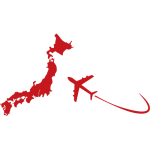
Make preparations and finally depart for Japan!
Mt. Fuji Photo Gallery




































©️Japan Exploration Tours JIN-仁






